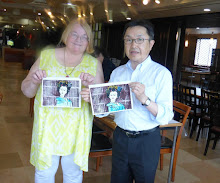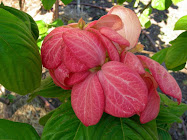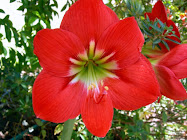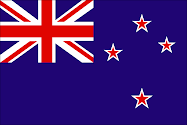Sunday 7 January
The mini-van picked me up from the hostel and then we stopped at the Tourist Office in Hinemaru Street, where we waited while a few other people boarded. Our driver was a jovial Māori chap called Mark and each time he opened or shut the door it made a shuddering clang! He was funny and fun to be with and welcomed us in different languages - I think he said he could say welcome in 74 languages!
He asked us what country we came from and told us we all had to do an imitation of a bird or animal native to our country. I did the Kookaburra. I'm pretty good at kookaburra impressions - if truth be told, it's the only one I can do.
Mark gave us a history about Māori - their customs, way of life etc. and told us we were a tribe and had to elect a Chief. Who'd like to be Chief he asked? Most put their hand up, including me. Then he dropped the bombshell - only a male could be Chief! He would have to go through the ritual of welcome when we reached the village, accept a challenge, pass a test, and make a gift to the village chief on our behalf - to show that we came in peace, not war. A nice-looking young bloke was made Chief (I remember he had blondish hair and was from California) and we all cheered and clapped.
Being Chief has its advantages - you get to eat first!
Village Entrance
After about a 20 minute ride, we arrived at the village and looked around with interest. Mark again reminded our "Chief" of the seriousness of the Pōwhiri (welcome ceremony) he was to participate in and we were instructed not to laugh, talk or move - it is considered extremely rude. We could however take photos.
Pōwhiri
The purpose of the Pōwhiri is to remove the tapu of the Manuhiri (visitors) to make them one with the Tangata Whenua (Home people). It is a gradual process of the Manuhiri and the Tangata Whenua coming together.
Māori Warrior
We entered the village forecourt and waited. A blood-curdling scream rang out from the forest
The Warrior Approaches
Guards
Then the warriors came - in traditional dress they looked fearsome and daring yelling out war cries.
Māori Warriors
Display of Weaponry
Karanga
The karanga usually indicates the start of the pōwhiri (formal welcome ceremony). Carried out exclusively by women and in the Māori language, karanga is initiated by the hosts (tangata whenua). The karanga generally begins with the initiating caller (kaikaranga) from the tangata whenua, and response caller (kaiwhakatu) from the manuhiri.
Like the whaikōrero (formal speech of welcome), karanga follow a format in keeping with correct protocol.
Marae
Marae
The Challenge
Amid war cries, the challenge is thrown down and our "Chief" is being given a test. Imagine having this fellow that close, aim his spear at you – a very effective way of frightening your enemies!
Māori Chief
Our "chief" passed the test, the Māori Chief and ours pressed noses, and we were welcomed into the village. (Sighs of relief)
Some may say it is all for show, for the tourists, and in a way it is - but what you should know, and remember is this..these customs are part of the Māori culture that stems back for hundreds of years, and has been handed down from father to son, from mother to daughter. In this way, their culture is not lost, but kept alive.
It was a most wonderful experience.
Tēnā koutou katoa
This is all about New Zealand - Aotearoa - and the time I spent there. Magical times, beautiful scenery, gushing geysers, thermal wonderlands. Hear about Waitangi Day, discover the meaning of the word "Aotearoa", see the Glaciers, read about hangis and Hakas, and visit the beautiful Bay of Islands. So come with me on a journey - a journey to The Land of The Long White Cloud.
Kia ora
CHRISTCHURCH EARTHQUAKE TRIBUTE 2011
Kia ora
Watch The Haka
Subscribe to:
Post Comments (Atom)

















No comments:
Post a Comment